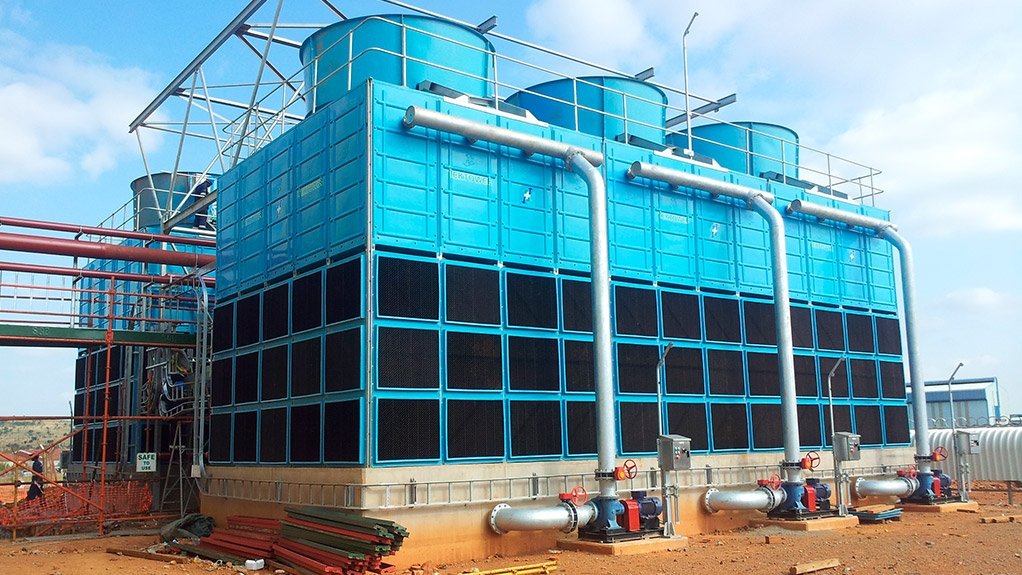Demand for improved efficiency drives competition


INVERTERS PLAY A MAJOR ROLE A major part of the increased efficiencies of heating and cooling solutions is the adoption of inverter technology
The demand for increased efficiency of heating and cooling solutions at affordable prices has created stiff competition for companies in the industry, says engineering professional services consulting firm WSP|Parsons Brinckerhoff technical director Pieter de Bod, a registered professional mechanical engineer.
“The efficiency of heating and cooling equipment has improved radically over the past couple of years. The increased levels of efficiency of chillers and heat pumps, the biggest power consumer in the air-conditioning system, have been spurred on by green building councils and international clients with strict environmental policies and markets, and they are forcing suppliers to improve their efficiency.”
De Bod highlights that the adoption of inverter technology has played a major role in increasing the efficiency of heating and cooling solutions. “Presently, almost all compressors and fans are equipped with inverter technology, whereas ten years ago, none had. Technology has advanced to allow for a slow ramp-up and ramp-down process, as opposed to the sudden in-rush of power common in a less advanced system.”
He tells Engineering News that, inverter technologies have become widely used in the industry, and that the company has included these technologies as standard in all its recent heating, ventilation and air-conditioning (HVAC) systems.
De Bod states that another new technology that is growing in popularity in the HVAC market is active chilled beams. This involves the heating or cooling (which radiates outwards) of surfaces, such as ceiling tiles, with customers being able to control the temperatures.
“ . . . we have completed a number of projects incorporating this technology, the largest of which is the Atrium on 5th building in Sandton, Johannesburg”.
Further, with regard to technological advancements in industry, De Bod highlights the use of water-saving cooling towers. He states that these towers can save up to 80% of the water that would be used in alternative cooling solutions. “Although the technology does come at a premium capital cost, these solutions promise a positive return on investment in the medium and long term.
“To prove to clients that the initial capital cost is only one of many factors to be considered, companies using heating and cooling solutions must consider the life span of equipment and overall long-term operation, service and maintenance costs. We look at the return-on-investment calculations.” The process is similar to that of replacing an outdated light bulb with a modern energy-saving bulb – the initial capital cost is high, but the savings that the technology allows will quickly recover the capital expenditure.
Meanwhile, De Bod notes that most people have grown accustomed to air conditioning in their cars and homes. This means that many people expect temperature control solutions to also be in place at their places of work, he adds. De Bod states that many old buildings’ HVAC systems are nearing the end of their life span, therefore, requiring frequent maintenance. Replacing these systems with newer, more energy efficient solutions creates a lot of work in industry, and an improved indoor environment for the tenants, he adds.
Further, the amount of expenditure being directed towards the heating and cooling industry is largely proportional to the construction sector growth, says De Bod. “If that is not growing, then the air-conditioning industry does not grow as fast.”
WSP offers expertise and knowledge of major and modern HVAC solutions. De Bod states that the company has a good mixture of young engineers, with expertise and familiarity with modern technology, as well as older engineers, who can provide insight on tested systems.
“This expansive skills base of WSP Parsons staff means that the company can provide the best service and advice for clients,” he concludes.
Article Enquiry
Email Article
Save Article
Feedback
To advertise email advertising@creamermedia.co.za or click here
Comments
Announcements
What's On
Subscribe to improve your user experience...
Option 1 (equivalent of R125 a month):
Receive a weekly copy of Creamer Media's Engineering News & Mining Weekly magazine
(print copy for those in South Africa and e-magazine for those outside of South Africa)
Receive daily email newsletters
Access to full search results
Access archive of magazine back copies
Access to Projects in Progress
Access to ONE Research Report of your choice in PDF format
Option 2 (equivalent of R375 a month):
All benefits from Option 1
PLUS
Access to Creamer Media's Research Channel Africa for ALL Research Reports, in PDF format, on various industrial and mining sectors
including Electricity; Water; Energy Transition; Hydrogen; Roads, Rail and Ports; Coal; Gold; Platinum; Battery Metals; etc.
Already a subscriber?
Forgotten your password?
Receive weekly copy of Creamer Media's Engineering News & Mining Weekly magazine (print copy for those in South Africa and e-magazine for those outside of South Africa)
➕
Recieve daily email newsletters
➕
Access to full search results
➕
Access archive of magazine back copies
➕
Access to Projects in Progress
➕
Access to ONE Research Report of your choice in PDF format
RESEARCH CHANNEL AFRICA
R4500 (equivalent of R375 a month)
SUBSCRIBEAll benefits from Option 1
➕
Access to Creamer Media's Research Channel Africa for ALL Research Reports on various industrial and mining sectors, in PDF format, including on:
Electricity
➕
Water
➕
Energy Transition
➕
Hydrogen
➕
Roads, Rail and Ports
➕
Coal
➕
Gold
➕
Platinum
➕
Battery Metals
➕
etc.
Receive all benefits from Option 1 or Option 2 delivered to numerous people at your company
➕
Multiple User names and Passwords for simultaneous log-ins
➕
Intranet integration access to all in your organisation















